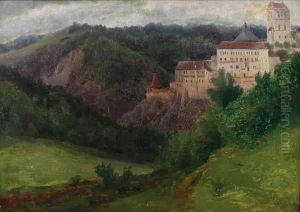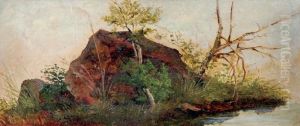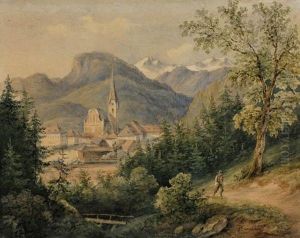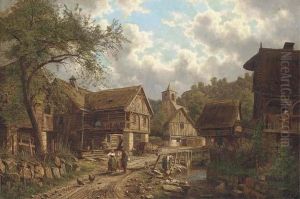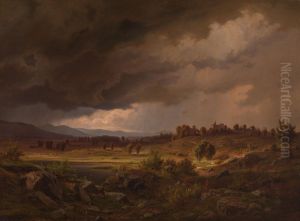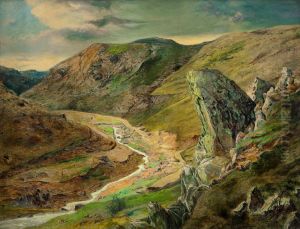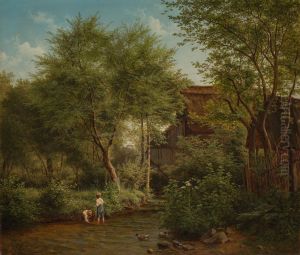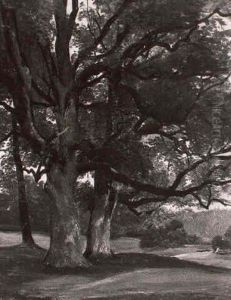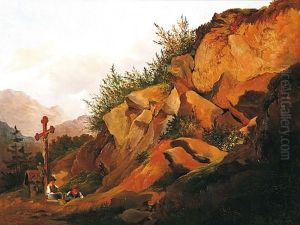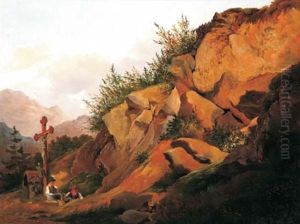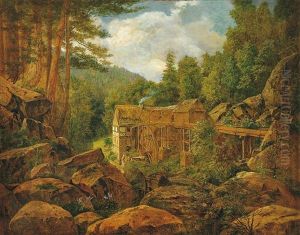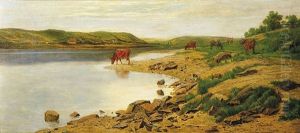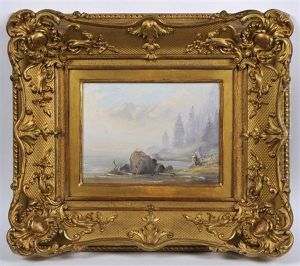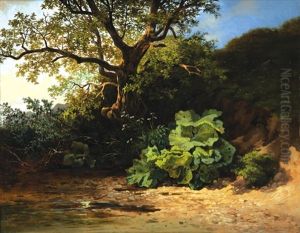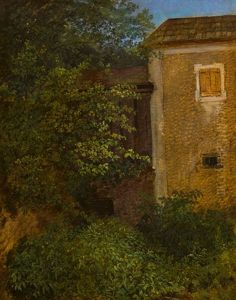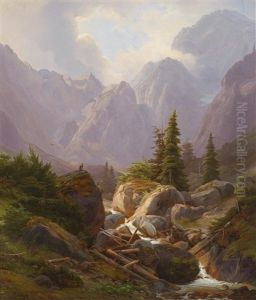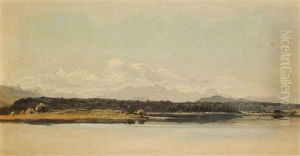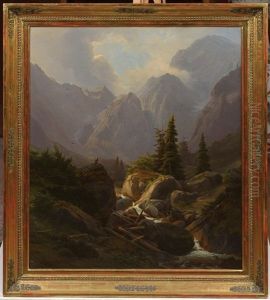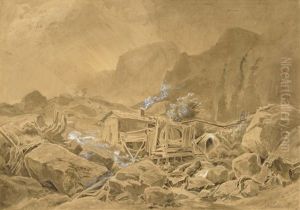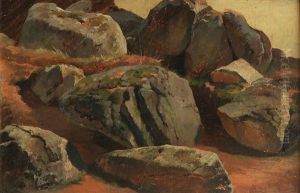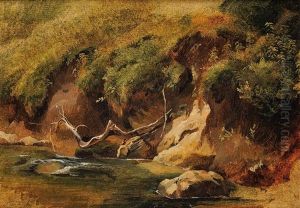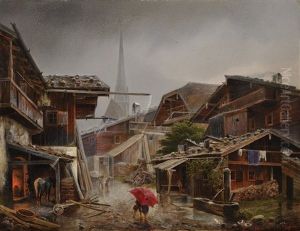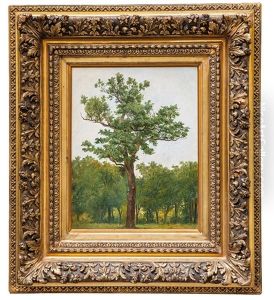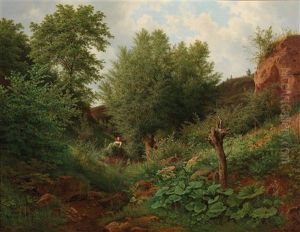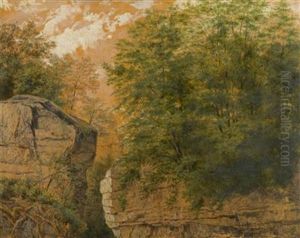Bedrich Havranek Paintings
Bedřich Havránek was a Czech landscape painter, born on September 17, 1821, in Prague, which was then part of the Austrian Empire and now the capital of the Czech Republic. He is known for his romantic and picturesque depictions of the Czech countryside, which reflect the national revival of interest in the Czech lands and their history during the 19th century.
Havránek showed early talent for art and began his studies at the Academy of Fine Arts in Prague. His education continued with a significant period of study at the Academy of Fine Arts in Vienna, where he was influenced by the Biedermeier style, characterized by a simple, unpretentious, and sentimental portrayal of middle-class life. However, it was the romantic landscape painting that truly captured Havránek's interest and became his primary genre.
In his works, Havránek often focused on the rural landscapes of Bohemia, which is the western part of the current Czech Republic. He was particularly fascinated by the historical and folk aspects of these regions, which he felt a deep connection to as part of his heritage. His landscapes are often idyllic, imbued with a sense of peace and the beauty of unspoiled nature. They frequently feature historical buildings such as castles or ruins, which serve to anchor the Czech lands in a deep historical context.
Throughout his career, Havránek's style evolved, but he always maintained a focus on the emotive aspects of landscape painting. He was also a teacher, passing on his knowledge and passion for art to the next generation. His influence extended to many students who would continue the tradition of Czech landscape painting.
Bedřich Havránek's contributions to Czech art were significant in that they helped to foster a sense of national identity and pride during a period of cultural and political revival. Through his paintings, Havránek not only documented the beauty of the Czech landscape but also contributed to the burgeoning sense of Czech nationalism that characterized the 19th century. He died on March 15, 1899, in Prague, leaving behind a legacy of work that continues to be celebrated for its portrayal of the Czech homeland.
